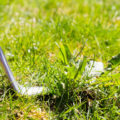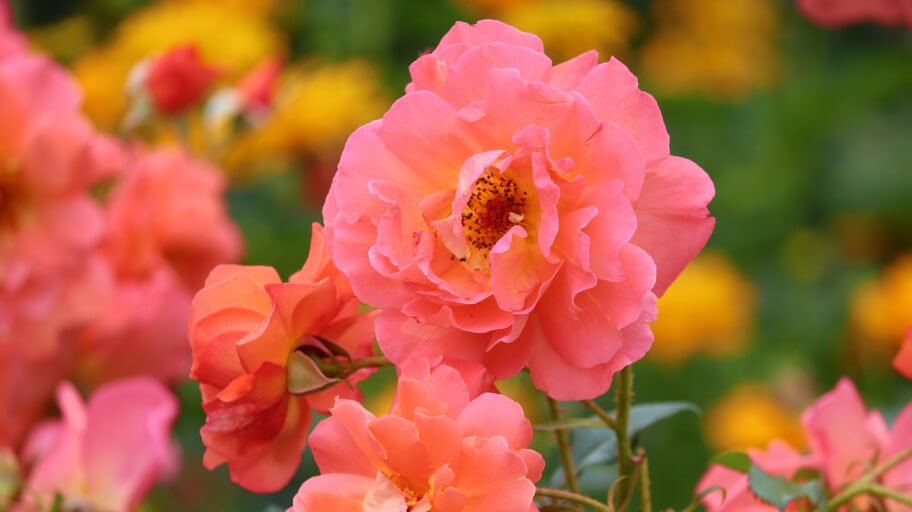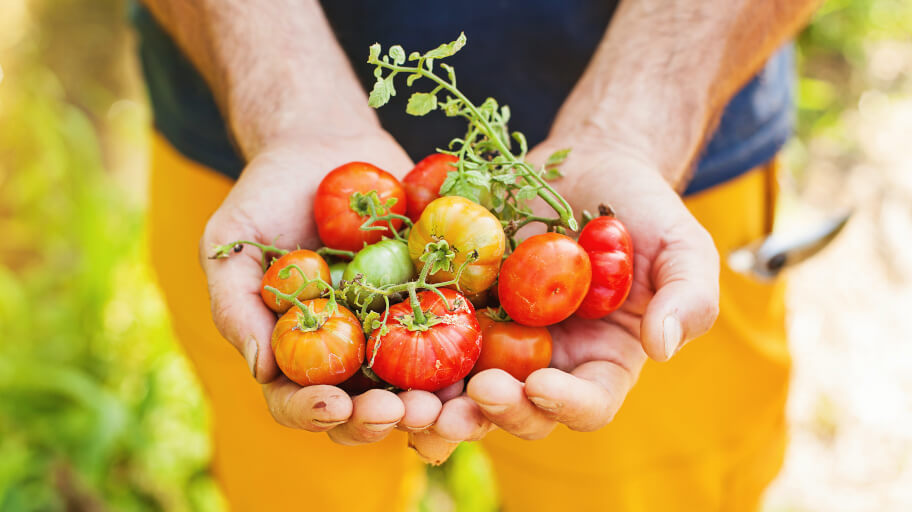
Spring is a hectic time for keen gardeners. There are many jobs to do in the garden, and we are as busy as bees. However, the most important thing to do in spring is planting. It is a task that will pay off big dividends. Here at Fantastic Gardeners Melbourne, we decided to prepare a list of garden plants you should have no trouble growing in your garden, although some of them are trickier to grow than others.
HERBS

Basil
Easy to grow and goes well with all kinds of dishes containing tomatoes. They also get along just wonderfully in the garden. It has many varieties and can be grown both in containers and in the ground. Basil requires 6 to 8 hours of light daily, moist but well-drained soil. Remember to remove the flower heads as soon as they appear to promote leaf growth.
If you live in a hotter region, spreading mulch around the base will retain the moisture and keep the plant cool. To promote plant growth in the summer, regularly pinch the leaves.

Chives
Be mindful when planting these babies, as they can quickly overtake your garden if the flowers are left to ripen and scatter the seeds. You can head start the seeds indoors in disposable cups before planting them in the garden.
Keep in mind that chives like full sun exposure. The soil must be fertile, moist and well-drained. To optimise your yields, you will have to water them consistently in the growing season. To make sure chives don’t run rampant throughout your garden, simply remove the flowers before they start seeding.
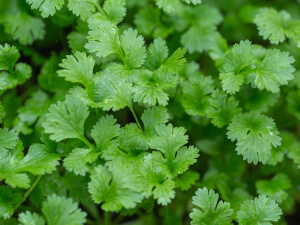
Coriander
This herb likes the colder spring and autumn weather, and it will bolt in summer, spoiling the taste of the leaves. This plant hates to be transplanted, so always grow from seed!
It will self-seed as long as it’s somewhere sunny, but be mindful not to overheat it. Water the seedlings regularly during the growing season.
It’s generally a good idea to mulch right after the plants poke out from the ground.
Best to plant it in a herb garden or the corner of your vegetable garden. Coriander grows well with basil and mint.

Dill
Aside from using it for cooking, dill is fantastic at protecting your garden. It is known to attract predatory insects that will help control garden pests. And it’s also super easy to grow. Plant it in late spring and make sure to shelter it from the wind.
Plant dill in September at approximately three times the seed’s diameter and 15 cm between each plant. Like every herb, it loves the sun but can tolerate partial sun. It can grow up to 1 m tall, so make sure you choose the right spot in your garden. It grows well with broccoli, tomatoes, cabbage or onions, but keep it away from carrots.

Mint
There are many varieties of mint, and they’re all fantastic.
They are all easy to grow, thriving both in shade and sunlight, with the only prerequisite being a well-drained soil resembling that along the banks of a stream.
When grown outdoors, a light mulch will do wonders for it.
Plant each one about 60 cm away from the other.
Mints benefit from picking so don’t be too shy.

Oregano
Another herb that goes great with Italian dishes. It also blooms with purple flowers and can be a great addition to your garden. Oregano is a hardy plant that loves warm weather and sun, so some people plant it in early summer to ensure maximum flavour. You can plant it from September to November. Make sure to choose a spot when it can get as much direct sunlight as possible. Put the plants 20-25 centimetres aside from each other.
When the plant has grown to about 10 centimetres, employ strategic pruning and trimming to promote more dense bushier growth. Oregano doesn’t need much water, so be careful not to overdo it. As a rule of thumb, water the plant thoroughly only when the soil feels dry to the touch.

Parsley
Parsley is a necessary part of every kitchen. It has many health benefits and tastes great. But what about its needs?
It’s pretty easy to grow, and it loves rich, well-drained soil and compost. It is best to plant it in September or October.
It can handle cold weather, but it may take around three weeks to sprout. It’s generally easy to grow.
Be sure to water the plants evenly throughout summer.
Just keep it away from lettuce as they don’t grow well together, and you’ll be able to enjoy its benefits.

Sage
You can plant it from seeds, but the best way to grow high-quality sage is using cuttings from an already developed plant.
For best growth, the soil should be warm – above 19°C.
Plant it away from your cucumbers, though. Water sage regularly until it matures.
The adult plant has a long lifespan, but it’s a good idea to replace them every four years to ensure the best quality.
Remember to prune the thicker woodier stems every spring.

Thyme
It’s almost impossible to grow this one from a seedling, so I suggest you get an already started plant from the market or a cutting from a friend who has a mature plant. You can plant thyme in early spring in well-drained soil. Plant each one at around 20 centimetres apart. Prune the plants in spring and summer to contain the growth. This is also the best time to get cuttings for new plants.
You can plant thyme all year round, but it is best to do it in September. Watering is almost unnecessary. Ït spreads, so leave about 20cm between each plant. It loves well-drained soil and little to no watering. It’s a low maintenance plant and is beautiful to look at. It’s also well-known for its culinary and medicinal uses.
FRUIT

Strawberries
These tasty berries are most delicious when grown yourself, mainly because when the strawberries are separated from the plant, the natural sugars start to convert to starch. So having them fresh is the best way to go. They are relatively easy to grow as long as they get 6 to 10 hours of sunlight a day, depending on the species. The best soil for strawberry is loamy, and they require it to be well-drained, thriving in raised beds. Just mind that they are sprawling plants and thus need space.
If you want a truly bountiful harvest, you will have to exercise some patience. Pick the flowers off the first year. When not allowed to bear fruit, the plant will, in turn, strengthen its roots. This will make the yield much more plentiful in the coming year. The roots of this plant are shallow, so even watering is extremely important. Mulching is also essential to protect the plants and keep them well moisturised. Weed them carefully and by hand.

Tomato
It’s best to use transplants, although growing tomatoes from seeds isn’t impossible. Start them in September indoors and transplant them in October or November (for a temperate climate). Provide them with 6 to 8 hours of sunlight daily. Some kind of support structure is recommended (stakes, cages, or both). They can be grown on the ground, too, if you have space and the weather is amiable.
Tomatoes require a good amount of sun (around 5 hours a day). So plan accordingly. Harden the transplants for a week before moving them outdoors. Wait until the soil is warm and prepare it by tilling it and mixing it with aged manure, fertiliser, or better yet – compost.

Zucchini
They have a low resistance to cold and heat, so be advised when planting. However, you can have delicious produce from a few plants with proper care—plant in moist but not soggy soil at a soil temperature of at least 15°C. You can use a mulch to warm the ground before inserting the seeds. Work in compost and organic matter into the soil because these are heavy feeders.
Water these plants deeply as the soil needs to be moist 10 centimetres down. Keep the mulch after the plants start to mature, as this will protect the shallow roots. If the fruits are misshapen, that means the plants didn’t receive enough nourishment or water.
VEGETABLES

Broccoli
These are hardy veggies, able to germinate in soil with temperatures as low as 4°C. Broccoli requires lots of sunlight, so make sure they get full exposure. It’s best to plant broccoli undercover in seed trays in September and transplant it in the garden in October or November (for a temperate climate). Broccoli is easy to care for, just keep them well-watered as seedlings.
As for soil, go for sandy and slightly acidic. If you need to change the soil’s pH balance, you can use rich compost or a thin layer of manure.
Fertilise your broccoli three weeks after transplanting. You have to provide the plants with consistently moist soil, but remember never to wet the growing heads when you water the plant. Mulching is highly recommended because of the plant’s shallow roots.

Cauliflower
As a descendant of the common cabbage, the cauliflower prefers cooler weather, needing the temperature to be consistently around 15°C. Otherwise, the plant will “button up” and never produce its typical bloom. You still have to choose a planting site with at least 6 hours of direct sun. Make sure, as with broccoli, to have slightly acidic soil, between 6.5-6.8 pH. Fertilise well to make sure the soil retains much water.
If the plant’s growth is interrupted, it may start developing heads prematurely and ruin the taste. For best growth, add nitrogen to the soil during that period. When the head is about 5 to 7 centimetres in diameter, take the plant’s outer leaves and tie them above with a rubber band. This is called blanching, and it’s made to protect the edible part from the sun. Cauliflower is usually ready 7 to 12 days after this is done.

Cabbage
Cabbage likes colder weather, so your best bet is to plant it indoors 6-8 weeks before the coldest spring day and take them outside 3-4 weeks later.
Prepare the soil by mulching it thickly to retain moisture and temperature and mix in aged manure or compost.
Although they require a lot of sunlight, higher temperatures will impair cabbage growth and may kill it. So don’t wait too long.

Carrot
You can plant carrots almost all year round, but they prefer colder weather. So, make sure you choose a month between September and October. They tolerate some shade but grow best in full sun and sandy soil. Apply a light mulch to protect the roots from sunlight, retain moisture, and help germination.
They are a root crop, so don’t add anything to the soil that contains nitrogen, as it will leave the roots underdeveloped. They also need damp soil. Water diligently and water at least 3 centimetres per week. Cover them with a thick layer of leaves to keep them warm and harvest them later in autumn. Great taste and a ton of vitamins await you!
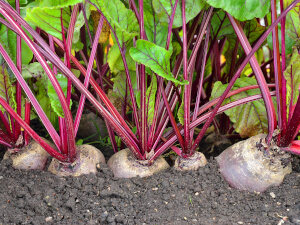
Beets
Beets are best to be started directly in the garden.
For areas with low moisture, you can soak the seeds for 24 hours before planting. After that, mulch and water well. If the weather is cooler, they will continue to get bigger.
However, once the temperatures rise, you need to harvest them unless you want them to go to waste. Beets are classified as a superfood, so don’t underestimate their nutritional value.

Radishes
Radishes are great for mixed green salad in the spring.
Like beets, they are incredibly nutritious, which is why – a great addition to your garden.
Sow them directly in well-draining soil to allow for root development.
Keep the soil moist but don’t overwater the radishes, as it will cause the roots to become underdeveloped.

Celery
It can be tricky to grow, which is why you should always start celery indoors. It requires rich soil, cool temperatures, and constantly high moisture.
Celery needs a lot of water, especially in its growing season. Fertilise regularly – celery is a heavy feeder.
Celery doesn’t tolerate heat. To reduce germination time, soak seeds overnight in warm water before planting. To keep growing celery stalks from sprawling and conserve space, you can tie them together.
Remember to mulch and water directly after planting.

Cucumber
They are easy to grow as long as you keep a few things in mind. Cucumbers love their soil-well drained and moist, as well as lots of sunlight. So it’s best to wait for the warmer days before planting.
When the seedlings reach 10 centimetres, start watering frequently and increase to a gallon per week after fruit forms. You can check with your finger. If the soil is dry 2 centimetres down, it’s time to water. Add the liquid slowly and mind the leaves. The best times to water is in the morning or early afternoon. If you’ve already worked organic matter in the soil before planting, next to no fertilisation will be needed.
Do not over fertilise, or the cucumbers will get stunted. A neat trick to boost your production is to spray the leaves with sugar water lightly.
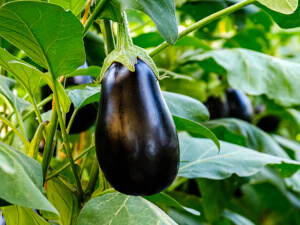
Eggplant
Eggplants are low-calorie, nutritious fruits that are a great source of vitamins. A great addition to your garden! They are tropical and subtropical (depending on species) and thus like warmer weather. Just like tomatoes, eggplants don’t enjoy cold temperatures. They also need to be started indoors in September and after that transplanted between October and December.
Start them indoors around two months before the soil begins to warm up and then transplant them outdoors into sandy soil. Mulch eggplants immediately after transplanting and gently pull out weeds by hand. Make sure they get lots of sunlight. If you want the plant to grow more like a bush, trim the terminal growing points.
Apply a balanced fertiliser every two weeks. And remember – The fewer fruits there are on a plant, the bigger they will be.
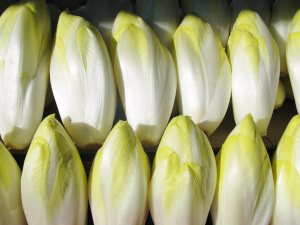
Endive
Thanks to the native Melbourne climate, endive can be grown relatively easy.
Endive prefers humus-rich soil and full sun.
Remember to keep it regularly watered because if they don’t get enough moisture, the leaves turn hard and bitter. It needs around 3 centimetres of water per week.
Remember to keep the soil moist and the leaves dry, otherwise they will rot.

Lettuce
Grows well in the Melbourne climate, typically preferring temperatures between 7 and 15°C, and it can even handle a bit of frost. It grows well when planted between September and November. It needs a little protection in early spring but will not bolt.
You should prepare the ground before planting the seeds by feeding it organic matter a week prior. The soil should be well tilled and loose. Lettuce prefers soils high in humus and nitrogen. Slow-release fertilisers are advisable.
Ensure the soil is wet but well-drained. It will tell you when it needs water, as its leaves will wilt. It’s easy to tell when your lettuce needs water. If the leaves are wilting, sprinkle them with water. Mulch will help conserve moisture. It’s easy to grow, but keep in mind to situate it properly, in the shade of taller plants, such as tomatoes and sweet corn.

Onion
Easy to grow Planting them from sets is the best method because it makes the crop more durable. The soil has to be loose for the bulb to grow easily and is rich in nitrogen.
A good rule of thumb is to keep a third of the bulb above ground. Be sure not to shade onions with other plants.
Fertilising every few weeks with nitrogen until the bulbing starts will ensure your onions grow big. If the onions start producing flower stalks, remove them. That means they have bolted.
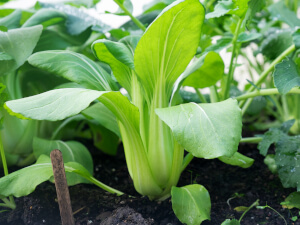
Pak choi
This is another hardy crop that can be grown almost at any time in our climate. Be careful, though, because it will bolt very quickly if it gets too hot. Find it some shade and keep the soil temperature down by watering regularly.
Since the seeds tend to be eaten by slugs and other soil critters, it’s advisable to start pak choi in a separate planter and transplant it into the soil when they’ve grown to about 5 cm height. The soil has to be able to retain moisture. Hydration is vital, so make sure they never dry out, or they will bolt. Young leaves are ready to be consumed after around 30 days. 15 days more, and the plant will develop a “heart”. Mind that pak choi loses a lot of its taste if it sits out of the ground. So take what you need from the plant when you need it.

Peas
Typically a cold season crop. They are easy to grow as long as temperatures are below 21°C.
Putting wood ashes in moderation in the soil before planting will significantly help peas grow.
Get them in the ground while the soil is still excellent, but do not let them sit in wet soil too long.
Peas don’t like a lot of nitrogen, so keep its contents low. Phosphorus and potassium are the peas friends.
Do not hoe around peas. This may disturb fragile shallow roots which will, of course, affect the health of the plant.

Spinach
Delicious, nutritious, and a must-have for any DIY gardener.
Spinach is tender but super cold-resistant at the same time.
Select a site with full sun to light shade and well-drained soil that you have prepared with aged manure a week before planting.
Soil should not be warmer than 21 °C for germination to occur.

Sweet corn
Corn requires a long season without drastic temperature drops to produce a good crop, so it’s best to plant it after the average is above 15°C. Sweet Corn is wind-pollinated, so it’s a good idea to plant it in groups instead of rows.
Plant in rich loamy soil on the spot with plenty of sunlight. The soil must be well-drained and able to retain moisture. We recommend mulching, as it will help retain moisture and also reduce weed growth. That will, in turn, save you a lot of work.
When you weed corn, do it carefully, so you don’t damage the roots.
What to plant in spring according to your region
Depending on which state of Australia you’re located in, here are the best herbs to plant in spring:
- North QLD, NT, and WA (wet and dry tropical climate) – basil, chives, dill, ginger, mint, oregano, chilli, parsley
- Sydney, coastal NSW, parts of Victoria (temperate climate) – basil, chives, mint, oregano, coriander, parsley, sage, dill, thyme
- Parts of Melbourne and Tasmania (cool climate) – basil, coriander, dill, chives, mint, oregano, parsley, thyme, sage
- Adelaide and Perth (Mediterranean climate) – basil, mint, oregano, chives, parsley, sage, coriander, dill, thyme
And here is what edibles to plant in spring, according to your region:
- North QLD, NT, and WA (wet and dry tropical climate) – beetroot, chilli, corn, cucumber, french beans, eggplant, lettuce, onions, radishes, spinach, squash, sweet potato, tomato, zucchini
- Sydney, coastal NSW, parts of Victoria (temperate climate) – beans, broccoli, capsicum, cucumber, eggplant, lettuce, onion, potato, pumpkin, radish, rhubarb, rosella, silverbeet, squash, sweet corn, sweet potato, tomato and zucchini
- Parts of Melbourne and Tasmania (cool climate) – cabbage, capsicum, carrots, cauliflower, celery, cucumber, eggplant, endive, leek, lettuce, onions, pak choi, peas, spinach, sweet corn, zucchini and tomato
- Adelaide and Perth (Mediterranean climate) – broccoli, carrot, celery, cucumber, lettuce, silverbeet, snow peas, spinach, sweet corn, zucchini and tomato
Need a helping hand with gardening?
The Fantastic Gardeners can help!
Images from Shutterstock.com by:
Jirik V
Svetlana Monyakova
Old Man Stocker
Tanya_mtv
lzf
Sunbunny Studio
Stephen Orsillo
Julitt
EQRoy
Farion_O
eugenegurkov
Diyana Dimitrova
Patnaree Asavacharanitich
Orest lyzhechka
Marinka Buronka
KarepaStock
Tatiana Volgutova
koodesnica71
Vlad Siaber
Leo Pakhomov
nnattalli
inavanhateren
FotobineSabineBrueggemann
Inga Gedrovicha
corners74
Zakhar Mar
Joseph Jacobs
Aedka Studio


